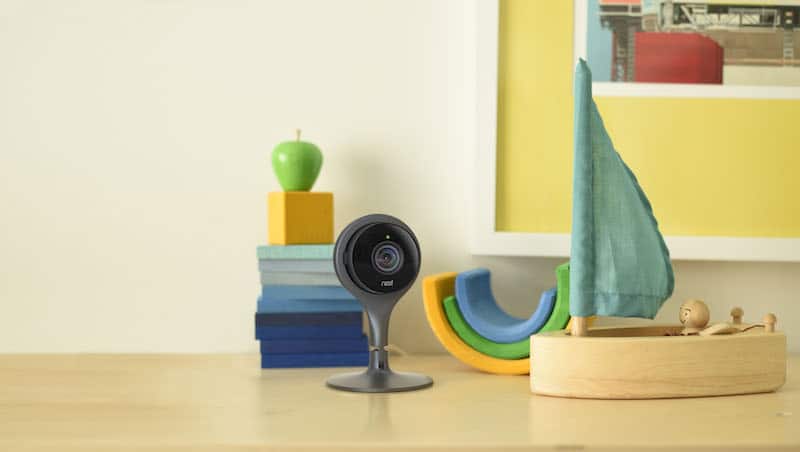Almost a year ago today, four months after being acquired by Google, Nest bought Dropcam for $555 million. Over the past twelve months Dropcam has been redeveloped into Nest Cam, which early observes have noted, seems very similar to the previous Dropcam Pro. Product development appears to have focused on integration into the Nest ecosystem, and rebranding.

Nest Cam records 1080p video with a 130-degree field of view, and has infrared night vision. There’s a microphone built in so you can hear and be heard in your home, and it will alert you in a smartphone app if there’s unexpected motion and sound in your home. It’s a Dropcam Pro, just slightly better.
Dropcam’s back-end service for watching and storing your camera’s video is being replaced by Nest Aware, a new paid service that lets you see what’s been going on in your house. You can save up to 30 days of video, and quickly save or share clips. The app can also algorithmically figure out which clips you’re likely to want to watch, in order to show those first.
The new Nest Protect smoke detector features new dual-wavelength, or split-spectrum, sensors that can detect "fast and slow moving fires", it can also distinguish between steam and smoke.
Nest Protect is not enabled with the company's "Nest Wave" feature, which would allow users to silence an over zealous alarm by waving their hand in front of device. Nest found that under "a unique combination of circumstances" the alarm could be disabled unintentionally. Instead, you’ll have to use your phone, which is hopefully nearby, and charged.
According to Nest's press release, the new Protect has been redesigned to be 11% smaller and now sits "more flush against the ceiling or wall." The light, not only used for alarms but also as a motion detecting nightlight in the dark, is now brighter. The new Protect is also equipped with a microphone, which the company claims is used for a once-a-month sound check; the device beeps, and the microphone listens and confirms the beeping still works. Microphones on Bluetooth-connected devices all around your home; what could go wrong?
[contact-form-7 id="3204" title="memoori-newsletter"]
Nest software updates will continue to be free, a huge appeal for Nest users, seeing their software get better at no extra cost. On stage at their announcement, Nest highlighted their history of software updates, citing considerable improvement over a short space of time.
This all comes off the back of Google’s launch of Brillo late last month, the "underlying operating system for the internet of things", with a developer preview coming in Q3 of this year. Brillo is derived from Android but configured to just the lower levels. It supports Wi-Fi, Bluetooth Low Energy, and other Android things. Brillo works with the new Weave, the cross platform, common language that will let Brillo devices, phones, and the internet all talk to one another, expected in Q4. Android devices will will now auto-detect Brillo and Weave devices.
There was some anticipation for the energy efficiency and management applications that many expect to come from Nest since their acquisition by Google. However, in a more competitive market segment, the company has chosen to focus on home security, convenience and connectivity.
“We’re working on a whole lot of stuff on the energy front”, said Greg Hu, Nest’s head of product marketing for the Nest Developer Program, without suggesting any timescales. However, the company has planned some third-quarter announcements on how partners are using its APIs to enable energy-related smart gear and services.



